-
EXECUTIVE SUMMARY
-
MARKET INTRODUCTION
-
Definition
-
Scope of the Study
- Research Objective
- Assumptions
- Limitations
-
RESEARCH METHODOLOGY
-
Overview
-
Data Mining
-
Secondary Research
-
Primary Research
- Primary Interviews and Information Gathering Process
- Breakdown of Primary Respondents
-
Forecasting Model
-
Market Size Estimation
- Bottom-Up Approach
- Top-Down Approach
-
Data Triangulation
-
Validation
-
MARKET DYNAMICS
-
Overview
-
Drivers
-
Restraints
-
Opportunities
-
MARKET FACTOR ANALYSIS
-
Value Chain Analysis
-
Porter’s Five Forces Analysis
- Bargaining Power of Suppliers
- Bargaining Power of Buyers
- Threat of New Entrants
- Threat of Substitutes
- Intensity of Rivalry
-
COVID-19 Impact Analysis
- Market Impact Analysis
- Regional Impact
- Opportunity and Threat Analysis
-
GLOBAL CANNED FRUITS AND VEGETABLES MARKET,BY PRODUCT TYPE
-
Overview
-
Tomatoes
-
Mushroom
-
Bulbs
-
Peas
-
Sweetcorn
-
Bean
-
Peaches
-
Strawberries
-
Raspberry
-
Others
-
GLOBAL CANNED FRUITS AND VEGETABLES MARKET,BY FORM
-
Overview
-
Peeled
-
Sliced
-
Chopped
-
Others
-
GLOBAL CANNED FRUITS AND VEGETABLES MARKET,BY APPLICATION
-
Overview
-
Toppings & Dressings
-
Salad
-
Culinary
-
Other Applications
-
GLOBAL CANNED FRUITS AND VEGETABLES MARKET, BY REGION
-
Overview
-
North America
- US
- Canada
-
Europe
- Germany
- France
- UK
- Italy
- Spain
- Rest of Europe
-
Asia-Pacific
- China
- India
- Japan
- South Korea
- Australia
- Rest of Asia-Pacific
-
Rest of the World
- Middle East
- Africa
- Latin America
-
COMPETITIVE LANDSCAPE
-
Overview
-
Competitive Analysis
-
Market Share Analysis
-
Major Growth Strategy in the Global Canned Fruits and Vegetables Market,
-
Competitive Benchmarking
-
Leading Players in Terms of Number of Developments in the Global Canned Fruits and Vegetables Market,
-
Key developments and Growth Strategies
- New ProductLaunch/Service Deployment
- Merger &Acquisitions
- Joint Ventures
-
Major Players Financial Matrix
- Sales & Operating Income,2022
- Major Players R&D Expenditure.2022
-
COMPANY PROFILES
-
Del Monte Foods,
- Company Overview
- Financial Overview
- Products Offered
- Key Developments
- SWOT Analysis
- Key Strategies
-
Kraft Heinz,.
- Company Overview
- Financial Overview
- Products Offered
- Key Developments
- SWOT Analysis
- Key Strategies
-
Dole Food Company Inc.,
- Company Overview
- Financial Overview
- Products Offered
- Key Developments
- SWOT Analysis
- Key Strategies
-
Seneca,
- Company Overview
- Financial Overview
- Products Offered
- Key Developments
- SWOT Analysis
- Key Strategies
-
ConAgra Foods,.
- Company Overview
- Financial Overview
- Products Offered
- Key Developments
- SWOT Analysis
- Key Strategies
-
Mediterranea Belfiore SRL,.
- Company Overview
- Financial Overview
- Products Offered
- Key Developments
- SWOT Analysis
- Key Strategies
-
Casual Spain,
- Company Overview
- Financial Overview
- Products Offered
- Key Developments
- SWOT Analysis
- Key Strategies
-
Banmai,
- Company Overview
- Financial Overview
- Products Offered
- Key Developments
- SWOT Analysis
- Key Strategies
-
Shenzhen Mingjun Co., Ltd.
- Company Overview
- Financial Overview
- Products Offered
- Key Developments
- SWOT Analysis
- Key Strategies
-
APPENDIX
-
References
-
Related Reports
-
-
LIST OF TABLES
-
GLOBAL CANNED FRUITS AND VEGETABLES MARKET, SYNOPSIS, 2024-2032
-
GLOBAL CANNED FRUITS AND VEGETABLES MARKET, ESTIMATES &FORECAST, 2024-2032(USD BILLION)
-
GLOBAL CANNED FRUITS AND VEGETABLES MARKET,BY PRODUCT TYPE, 2024-2032 (USD BILLION)
-
GLOBAL CANNED FRUITS AND VEGETABLES MARKET,BY FORM, 2024-2032 (USD BILLION)
-
GLOBAL CANNED FRUITS AND VEGETABLES MARKET,BY APPLICATION, 2024-2032 (USD BILLION)
-
NORTH AMERICA: CANNED FRUITS AND VEGETABLES MARKET,BY PRODUCT TYPE, 2024-2032 (USD BILLION)
-
NORTH AMERICA: CANNED FRUITS AND VEGETABLES MARKET,BY FORM, 2024-2032 (USD BILLION)
-
NORTH AMERICA: CANNED FRUITS AND VEGETABLES MARKET,BY APPLICATION, 2024-2032 (USD BILLION)
-
US: CANNED FRUITS AND VEGETABLES MARKET,BY PRODUCT TYPE, 2024-2032 (USD BILLION)
-
US: CANNED FRUITS AND VEGETABLES MARKET,BY FORM, 2024-2032 (USD BILLION)
-
US: CANNED FRUITS AND VEGETABLES MARKET,BY APPLICATION, 2024-2032 (USD BILLION)
-
CANADA: CANNED FRUITS AND VEGETABLES MARKET,BY PRODUCT TYPE, 2024-2032 (USD BILLION)
-
CANADA: CANNED FRUITS AND VEGETABLES MARKET,BY FORM, 2024-2032 (USD BILLION)
-
CANADA: CANNED FRUITS AND VEGETABLES MARKET,BY APPLICATION, 2024-2032 (USD BILLION)
-
EUROPE: CANNED FRUITS AND VEGETABLES MARKET,BY PRODUCT TYPE, 2024-2032 (USD BILLION)
-
EUROPE: CANNED FRUITS AND VEGETABLES MARKET, BY FORM , 2024-2032 (USD BILLION)
-
EUROPE: CANNED FRUITS AND VEGETABLES MARKET, BY APPLICATION, 2024-2032 (USD BILLION)
-
GERMANY: CANNED FRUITS AND VEGETABLES MARKET,BY PRODUCT TYPE,2024-2032 (USD BILLION)
-
GERMANY: CANNED FRUITS AND VEGETABLES MARKET, BY FORM, 2024-2032 (USD BILLION)
-
GERMANY: CANNED FRUITS AND VEGETABLES MARKET, BY APPLICATION , 2024-2032 (USD BILLION)
-
FRANCE: CANNED FRUITS AND VEGETABLES MARKET,BY PRODUCT TYPE, 2024-2032 (USD BILLION)
-
FRANCE: CANNED FRUITS AND VEGETABLES MARKET, BY FORM, 2024-2032 (USD BILLION)
-
FRANCE: CANNED FRUITS AND VEGETABLES MARKET, BY APPLICATION, 2024-2032 (USD BILLION)
-
ITALY: CANNED FRUITS AND VEGETABLES MARKET,BY PRODUCT TYPE, 2024-2032 (USD BILLION)
-
ITALY: CANNED FRUITS AND VEGETABLES MARKET, BY FORM, 2024-2032 (USD BILLION)
-
ITALY: CANNED FRUITS AND VEGETABLES MARKET, BY APPLICATION, 2024-2032 (USD BILLION)
-
SPAIN: CANNED FRUITS AND VEGETABLES MARKET,BY PRODUCT TYPE, 2024-2032 (USD BILLION)
-
SPAIN: CANNED FRUITS AND VEGETABLES MARKET, BY FORM, 2024-2032 (USD BILLION)
-
SPAIN: CANNED FRUITS AND VEGETABLES MARKET, BY APPLICATION, 2024-2032 (USD BILLION)
-
UK: CANNED FRUITS AND VEGETABLES MARKET,BY PRODUCT TYPE, 2024-2032 (USD BILLION)
-
UK: CANNED FRUITS AND VEGETABLES MARKET, BY FORM, 2024-2032 (USD BILLION)
-
UK: CANNED FRUITS AND VEGETABLES MARKET, BY APPLICATION, 2024-2032 (USD BILLION)
-
REST OF EUROPE: CANNED FRUITS AND VEGETABLES MARKET,BY PRODUCT TYPE, 2024-2032 (USD BILLION)
-
REST OF EUROPE: CANNED FRUITS AND VEGETABLES MARKET, BY FORM, 2024-2032 (USD BILLION)
-
REST OF EUROPE: CANNED FRUITS AND VEGETABLES MARKET, BY APPLICATION, 2024-2032 (USD BILLION)
-
ASIA-PACIFIC: CANNED FRUITS AND VEGETABLES MARKET,BY PRODUCT TYPE, 2024-2032 (USD BILLION)
-
ASIA-PACIFIC: CANNED FRUITS AND VEGETABLES MARKET, BY FORM, 2024-2032 (USD BILLION)
-
ASIA-PACIFIC: CANNED FRUITS AND VEGETABLES MARKET, BY APPLICATION, 2024-2032 (USD BILLION)
-
JAPAN: CANNED FRUITS AND VEGETABLES MARKET,BY PRODUCT TYPE, 2024-2032 (USD BILLION)
-
JAPAN: CANNED FRUITS AND VEGETABLES MARKET, BY FORM, 2024-2032 (USD BILLION)
-
JAPAN: CANNED FRUITS AND VEGETABLES MARKET, BY APPLICATION, 2024-2032 (USD BILLION)
-
CHINA: CANNED FRUITS AND VEGETABLES MARKET,BY PRODUCT TYPE, 2024-2032 (USD BILLION)
-
CHINA: CANNED FRUITS AND VEGETABLES MARKET, BY FORM, 2024-2032 (USD BILLION)
-
CHINA: CANNED FRUITS AND VEGETABLES MARKET, BY APPLICATION, 2024-2032 (USD BILLION)
-
INDIA: CANNED FRUITS AND VEGETABLES MARKET,BY PRODUCT TYPE, 2024-2032 (USD BILLION)
-
INDIA: CANNED FRUITS AND VEGETABLES MARKET, BY FORM, 2024-2032 (USD BILLION)
-
INDIA: CANNED FRUITS AND VEGETABLES MARKET, BY APPLICATION, 2024-2032 (USD BILLION)
-
AUSTRALIA: CANNED FRUITS AND VEGETABLES MARKET,BY PRODUCT TYPE, 2024-2032 (USD BILLION)
-
AUSTRALIA: CANNED FRUITS AND VEGETABLES MARKET, BY FORM, 2024-2032 (USD BILLION)
-
AUSTRALIA: CANNED FRUITS AND VEGETABLES MARKET, BY APPLICATION, 2024-2032 (USD BILLION)
-
SOUTH KOREA: CANNED FRUITS AND VEGETABLES MARKET,BY PRODUCT TYPE, 2024-2032 (USD BILLION)
-
SOUTH KOREA: CANNED FRUITS AND VEGETABLES MARKET, BY FORM, 2024-2032 (USD BILLION)
-
SOUTH KOREA: CANNED FRUITS AND VEGETABLES MARKET, BY APPLICATION, 2024-2032 (USD BILLION)
-
REST OF ASIA-PACIFIC: CANNED FRUITS AND VEGETABLES MARKET,BY PRODUCT TYPE, 2024-2032 (USD BILLION)
-
REST OF ASIA-PACIFIC: CANNED FRUITS AND VEGETABLES MARKET, BY FORM, 2024-2032 (USD BILLION)
-
REST OF ASIA-PACIFIC: CANNED FRUITS AND VEGETABLES MARKET, BY APPLICATION, 2024-2032 (USD BILLION)
-
REST OF THE WORLD: CANNED FRUITS AND VEGETABLES MARKET,BY PRODUCT TYPE, 2024-2032 (USD BILLION)
-
REST OF THE WORLD: CANNED FRUITS AND VEGETABLES MARKET, BY FORM, 2024-2032 (USD BILLION)
-
REST OF THE WORLD: CANNED FRUITS AND VEGETABLES MARKET, BY APPLICATION, 2024-2032 (USD BILLION)
-
MIDDLE EAST: CANNED FRUITS AND VEGETABLES MARKET,BY PRODUCT TYPE, 2024-2032 (USD BILLION)
-
MIDDLE EAST: CANNED FRUITS AND VEGETABLES MARKET, BY FORM, 2024-2032 (USD BILLION)
-
MIDDLE EAST: CANNED FRUITS AND VEGETABLES MARKET, BY APPLICATION, 2024-2032 (USD BILLION)
-
AFRICA: CANNED FRUITS AND VEGETABLES MARKET,BY PRODUCT TYPE, 2024-2032 (USD BILLION)
-
AFRICA: CANNED FRUITS AND VEGETABLES MARKET, BY FORM, 2024-2032 (USD BILLION)
-
AFRICA: CANNED FRUITS AND VEGETABLES MARKET, BY APPLICATION, 2024-2032 (USD BILLION)
-
LATIN AMERICA: CANNED FRUITS AND VEGETABLES MARKET,BY PRODUCT TYPE, 2024-2032 (USD BILLION)
-
LATIN AMERICA: CANNED FRUITS AND VEGETABLES MARKET, BY FORM, 2024-2032 (USD BILLION)
-
LATIN AMERICA: CANNED FRUITS AND VEGETABLES MARKET, BY APPLICATION, 2024-2032 (USD BILLION)
-
LIST OF FIGURES
-
RESEARCH PROCESS
-
MARKET STRUCTURE FOR THE GLOBAL CANNED FRUITS AND VEGETABLES MARKET
-
MARKET DYNAMICS FOR THE GLOBAL CANNED FRUITS AND VEGETABLES MARKET
-
GLOBAL CANNED FRUITS AND VEGETABLES MARKET, SHARE (%), BY PRODUCT TYPE, 2022
-
GLOBAL CANNED FRUITS AND VEGETABLES MARKET, SHARE (%), BY FORM, 2022
-
GLOBAL CANNED FRUITS AND VEGETABLES MARKET, SHARE (%), BY APPLICATION, 2022
-
GLOBAL CANNED FRUITS AND VEGETABLES MARKET, SHARE (%), BY REGION, 2022
-
NORTH AMERICA: CANNED FRUITS AND VEGETABLES MARKET, SHARE (%), BY REGION, 2022
-
EUROPE: CANNED FRUITS AND VEGETABLES MARKET, SHARE (%), BY REGION, 2022
-
ASIA-PACIFIC: CANNED FRUITS AND VEGETABLES MARKET, SHARE (%), BY REGION, 2022
-
REST OF THE WORLD: CANNED FRUITS AND VEGETABLES MARKET, SHARE (%), BY REGION, 2022
-
GLOBAL CANNED FRUITS AND VEGETABLES MARKET: COMPANY SHARE ANALYSIS, 2022 (%)
-
DEL MONTE FOODS,: FINANCIAL OVERVIEW SNAPSHOT
-
DEL MONTE FOODS,: SWOT ANALYSIS
-
KRAFT HEINZ,.:FINANCIAL OVERVIEW SNAPSHOT
-
KRAFT HEINZ,.:SWOT ANALYSIS
-
DOLE FOOD COMPANY INC.,:FINANCIAL OVERVIEW SNAPSHOT
-
DOLE FOOD COMPANY INC.,:SWOT ANALYSIS
-
SENECA.: FINANCIAL OVERVIEW SNAPSHOT
-
SENECA.:SWOT ANALYSIS
-
CONAGRA FOODS,:FINANCIAL OVERVIEW SNAPSHOT
-
CONAGRA FOODS,:SWOT ANALYSIS
-
MEDITERRANEA BELFIORE SRL.:FINANCIAL OVERVIEW SNAPSHOT
-
MEDITERRANEA BELFIORE SRL.:SWOT ANALYSIS
-
CASUAL SPAIN,: FINANCIAL OVERVIEW SNAPSHOT
-
CASUAL SPAIN,: SWOT ANALYSIS
-
BANMAI,: FINANCIAL OVERVIEW SNAPSHOT
-
BANMAI,: SWOT ANALYSIS
-
SHENZHEN MINGJUN CO., LTD.: FINANCIAL OVERVIEW SNAPSHOT
-
SHENZHEN MINGJUN CO., LTD.: SWOT ANALYSIS


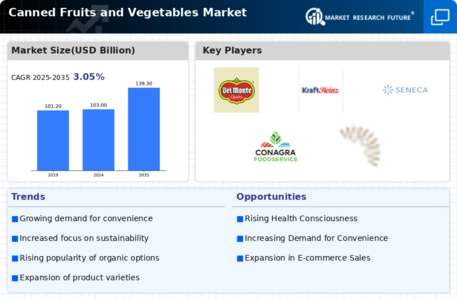
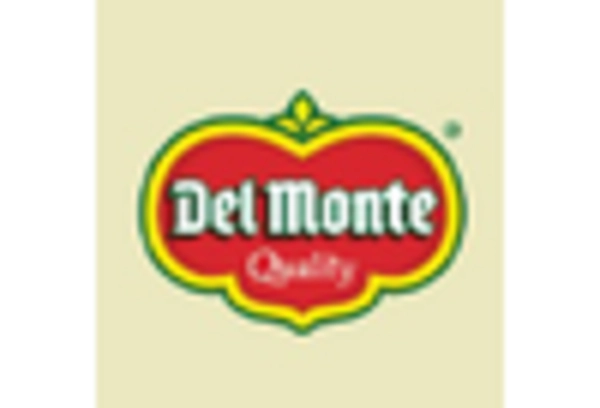

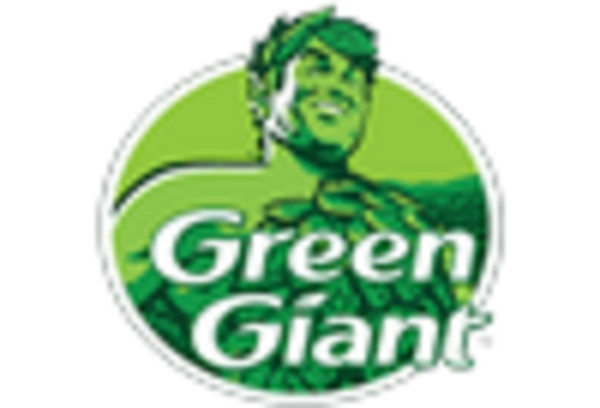
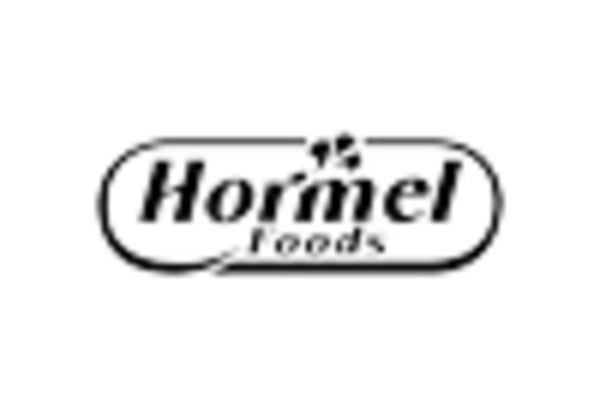
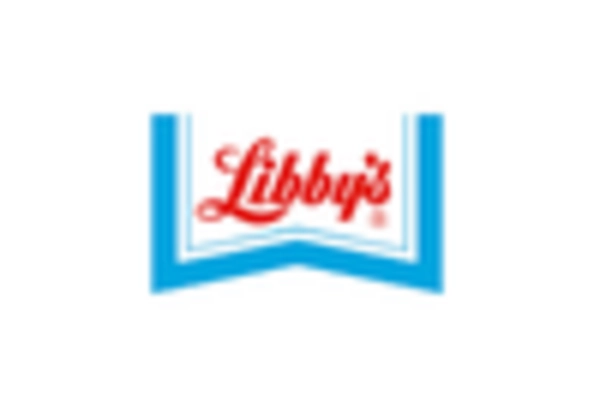
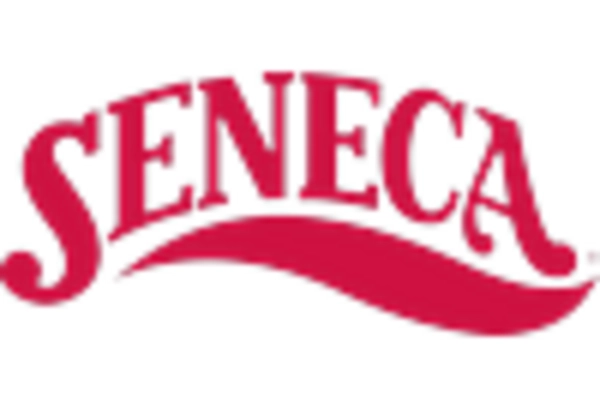









Leave a Comment